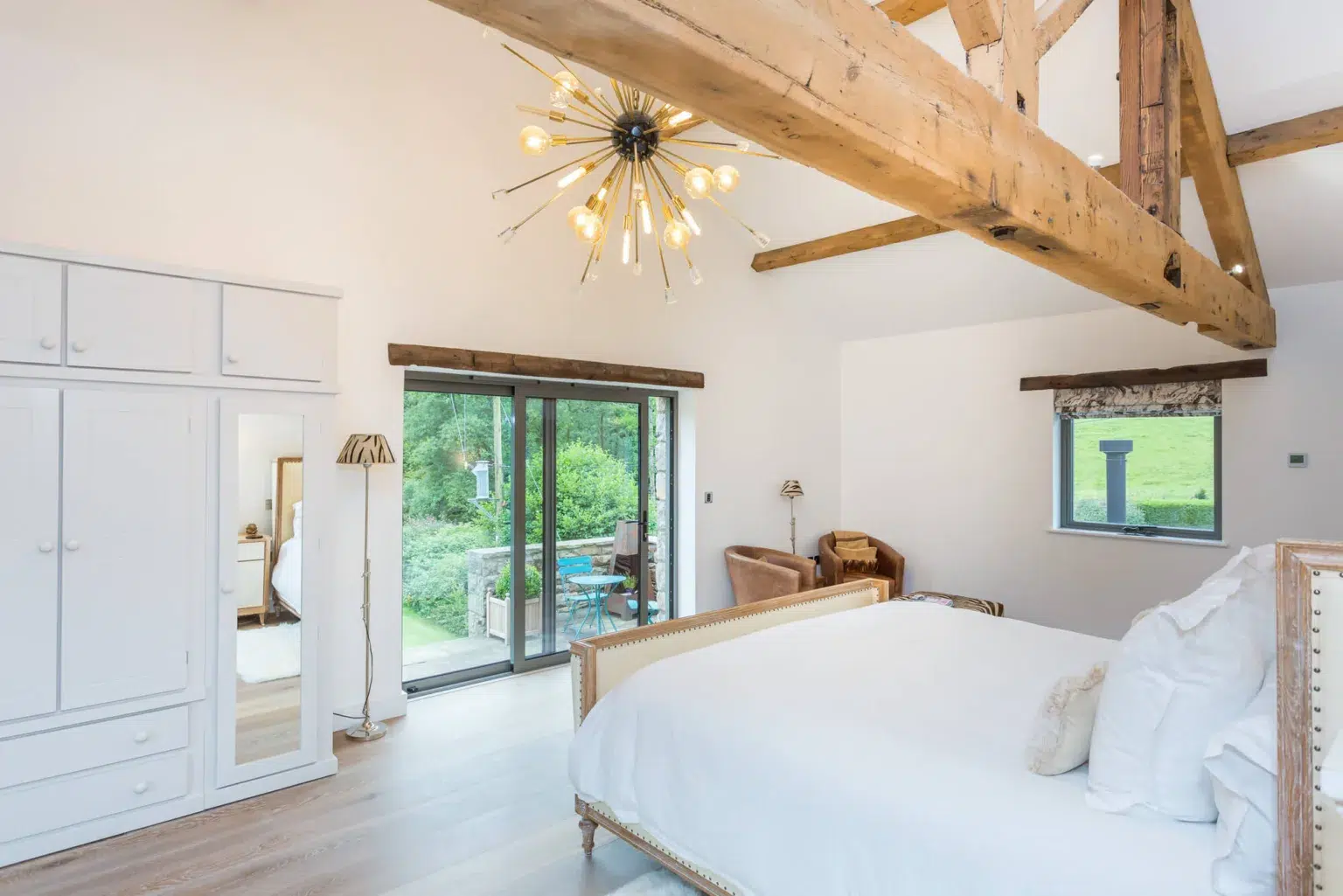Did you know that sleep fills a third of our lives and that studies have shown around a third of us are sleep-deprived? Those two facts caught my attention and focused it on optimal bedroom designs that can aid our sleep. Interior design can have such an impact on sleep hygiene, and I think we biophilic designers, in particular, should aim to help our clients sleep their way to wellness.

BIOPHILIA
The world sleep epidemic is becoming a major health challenge. Scientists are now convinced that our bodies require sleep in the same way that they require oxygen and water. A bedroom should engage all the senses from the moment you enter it. We know being surrounded by nature has a calming effect, so I seek to create tranquil and peaceful bedrooms that ultimately promote wellness. I always use natural materials to achieve exactly this.

Through the incorporation of nature-inspired accessories, natural materials, and earthy tones, my biophilic designs infuse spaces with the natural raw beauty of the outdoors. Aesthetics really do play a vital role in the creation of a calming space, one that allows us to recharge and promotes wellbeing. I seek to balance elements and create safe, beautiful, naturally sustainable, fabulous spaces that promote both mental and physical well-being.
Our homes are our sanctuaries, they provide refuge from our increasingly busy lives. They’re a place to escape our hectic world, allowing us to switch off, relax and replenish our energy. Designing for self-care and wellness really should be the number one priority in our homes – creating a bedroom environment that minimises sleep disruption and promotes restful sleep is simply vital.
COLOUR
Colour plays a significant role in whether a bedroom feels relaxing. Colour impacts on both our emotional and physical wellbeing. Take cues from nature’s colour palette and opt for soft neutral shades. This aids your sleep patterns and your body’s natural circadian rhythms.

Blues, greens and greys reduce your heart rate, lower blood pressure and slow down your rate of breathing. All good conditions in which to begin your night of great sleep! Green is a good colour option, and is considered stress relieving. Soft pastel shades work best and create a connection to nature that’s healing and rejuvenating. For a minimalistic look, you could paint the walls white and use green as an accent colour. Choose paints that are free from toxic VOCs (volatile organic compounds).
PLANTS
Biophilic interior design has shown the wide range of health benefits that house plants bring to a space. These include purer air, improved mood and increased productivity. Incorporating air filtering plants will aid sleep and improve the aesthetic of the room. Greenery/plants can reduce physiological and psychological stress. By incorporating plants into our bedrooms, we can create a happier and healthier environment. Plants are our oldest and most human-friendly air filters. Spider plants, snake plants and Boston ferns are all easy to maintain and have toxin-filtering properties.

ART
Adding art into your bedroom that depicts nature is a further way of harnessing the power of the natural world, allowing you subliminal access to its restorative powers. You can choose photos, paintings, drawings and even wallpaper that depicts scenes of nature. Research has found that just looking at pictures of nature can help reduce stress. Abstract natural art also provides a connection to nature. Our Artisan Artists use nature to create gorgeous pieces of art. Not only do their drawings/paintings bring nature into your room, but the colours they use also create calm.
LIGHT
Lighting is key in creating a natural and peaceful home environment and it’s one of the most important elements of a well-designed bedroom. However, light is the enemy of sleep, our bodies are naturally-programmed to sleep when it gets dark.

Maximise your exposure to natural light in the day and reduce blue light in the evening. Blue light is typically omitted by our electronics, keeping us hyper-alert well into the evening. Our bodies naturally produce the hormone melatonin when night falls, this is why we feel more relaxed in the evenings, but exposure to blue light suppresses our body’s ability to produce the hormone. This stops us from feeling sleepy and inhibits the body’s temperature from lowering, which is a contributing factor to our slide into sleep. Adding different layers of light in your bedroom will allow for more control, creating perfectly adapted light into the room. Remember to consider the particular size, dimensions and characteristics of the space.
Avoid bright white LEDs and choose incandescent bulbs that emit a warm light instead. Coupled with a lighting control system, you will have the optimum lighting control within your bedroom, allowing for the setting of various lighting ‘scenes’ that aid your sleep hygiene.
CHARLOTTE FINDLATER
Read more tips on charlottefindlater.com, as well as see Charlotte’s portfolio of projects.







